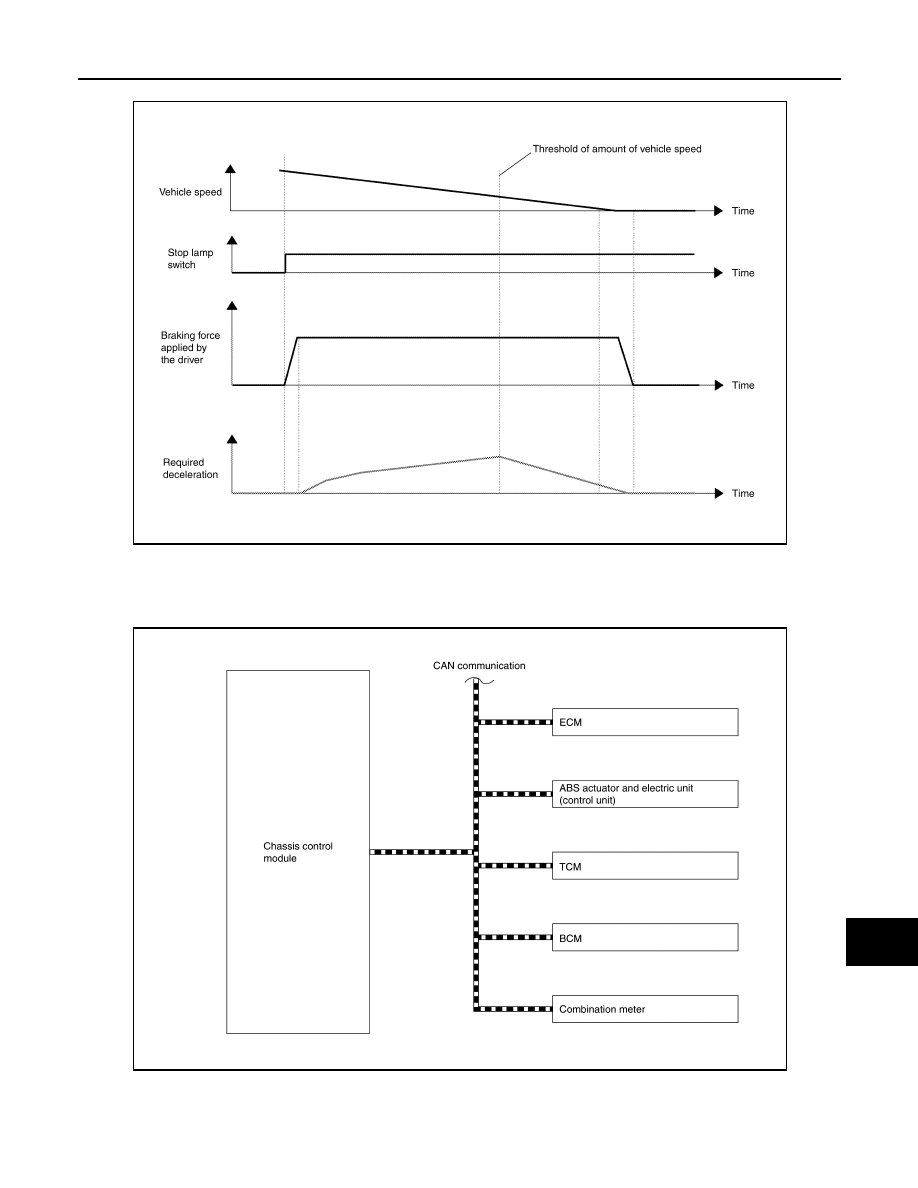содержание .. 358 359 360 361 ..
Nissan X-Trail 32. Manual - part 360

DAS
SYSTEM
DAS-181
< SYSTEM DESCRIPTION >
[CHASSIS CONTROL]
C
D
E
F
G
H
I
J
K
L
M
B
N
P
A
- The transaxle is controlled according to the brake condition.
SYSTEM DIAGRAM
NOTE:
TCM is applied to CVT models.
INPUT SIGNAL AND OUTPUT SIGNAL
Major signal transmission between each unit via communication lines is shown in the following table.
JSOIA1459GB
JSOIA1460GB